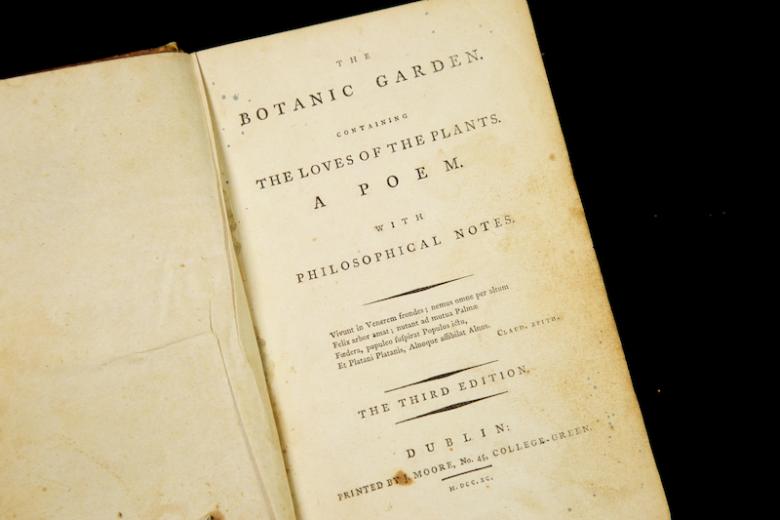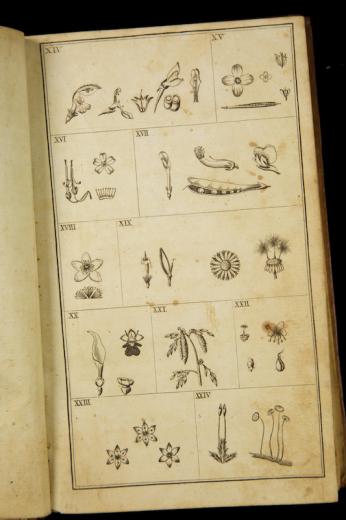Citation
Item Location
Erasmus Darwin, the grandfather of Charles Darwin, propounded an evolutionary theory in this widely popular didactic poem on plants. In Part 2, “Loves of the Plants,” he inserted a footnote about manzanilla (also known as chamomile). Erasmus likely drew his information from a lengthy extract of Hernandez published by the English botanist Hans Sloane. The legacy of Hernandez within Darwin’s popular poem illustrates how every practice and concern of natural history was affected by the American transformation. Not only was there a shift from the Old World to the New, and from an emblematic to a descriptive and historical approach, but natural history became more inclusive on a global scale, with an enlarged popular readership. Socially, new institutions arose to bring the natural objects of the globe together in a single place for study. Gardens and museums became places not only for ornamentation and delight, but also for active research in which the interested public might participate.
Related Items
Resource Type: Book







